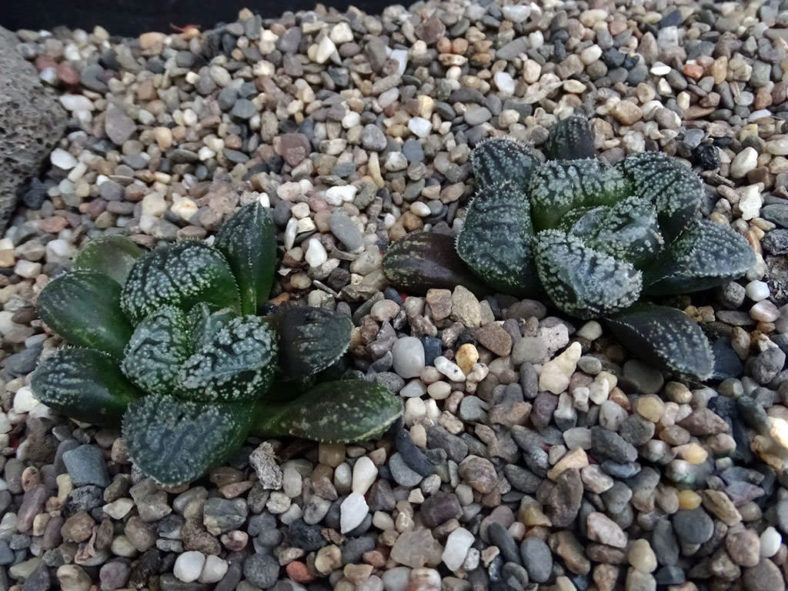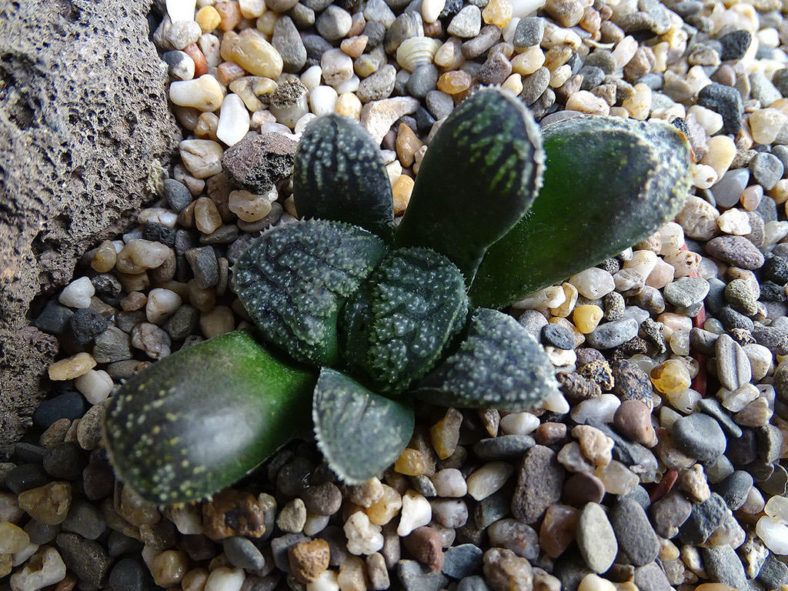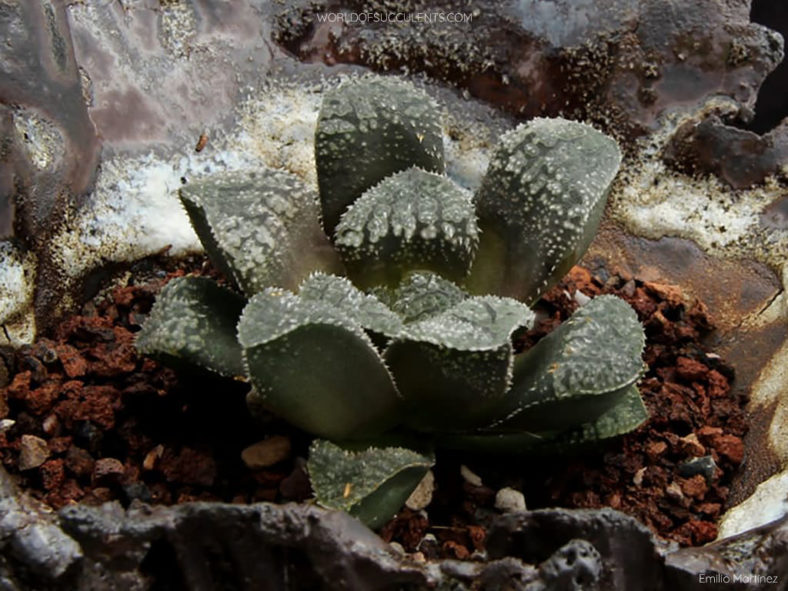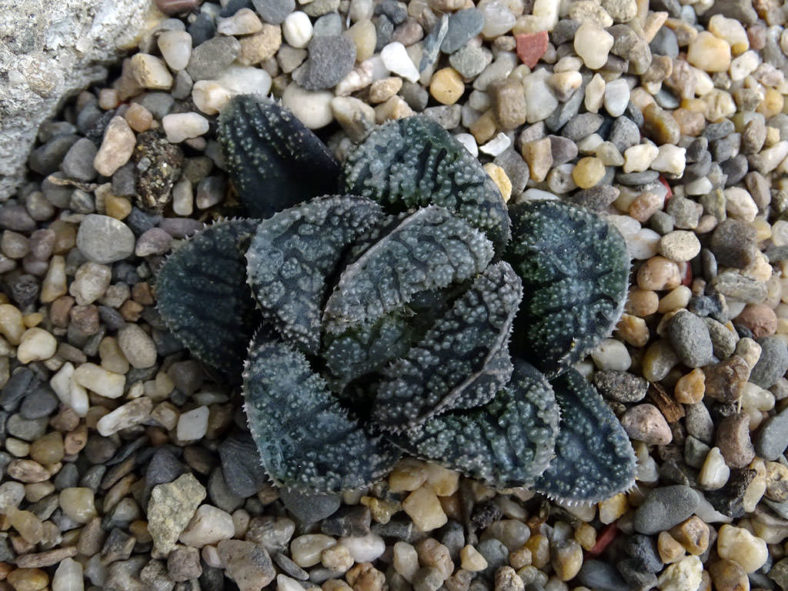Scientific Name
Haworthia 'Mordor'
Scientific Classification
Family: Asphodelaceae
Subfamily: Asphodeloideae
Tribe: Aloeae
Genus: Haworthia
Etymology
This hybrid was named after Mordor, a black volcanic plain in J. R. R. Tolkien's fictional world of Middle-earth, the realm and base of the evil Sauron.
Origin
Haworthia 'Mordor' is a Japanese hybrid created by Yu Hanai. The parentage is unknown, possibly involving Haworthia springbokvlakensis and Haworthia wimii (now synonymous with Haworthia emelyae var. major).
Description
Haworthia 'Mordor' is a beautiful small succulent that forms a compact, usually solitary rosette of turgid leaves with a charming pattern. The leaves are rounded and retused, dark green to almost black when exposed to intense light, and have a translucent end-area thickly covered with spiny, crystalline tubercles.
The white flowers have brownish venation and appear on simple, slender stalks in summer.

How to Grow and Care for Haworthia 'Mordor'
Light: Place the potted plant in a bright area with some protection from the hottest rays of the day. White, yellow, or red-tinged leaves usually indicate that your H. 'Mordor' receives too much sunlight. Deep shade tends to weaken the plant over a prolonged period. If your plant has spent the winter indoors, gradually move it outdoors into the bright sun to prevent sunburn.
Soil: Like all Haworthias, this plant does not like its roots to remain wet for prolonged periods, so the soil should be well-drained. Use a commercial potting mix for succulents, or make your own.
Temperature: This succulent likes warmer temperatures in the summer but cool in the winter. However, it does not like being too cold. H. 'Mordor' can withstand temperatures as low as 30 °F (-1.1 °C). USDA Plant Hardiness Zones 10a to 11b, 30 to 50 °F (-1.1 to 10 °C).
Watering: In spring and fall, when the growth is most active, water H. 'Mordor' thoroughly, then wait until the top of the soil dries out before watering again. Water your plant less during the winter when its growth slows down significantly. When this plant is mostly dormant during the hottest summer months, water it just enough to keep the leaves from shriveling.
Fertilizing: H. 'Mordor' does not require much fertilizer. However, for optimum growth, fertilizing is a good idea. Feed only with a dilute fertilizer and only during the active growing season.
Repotting: This slow-growing succulent can stay in the same pot for years. To keep your plant healthy and happy, repot H. 'Mordor' into fresh soil every two to three years in spring or fall. Repotting time is also the time to take offsets for propagation.
Propagation: Since a plant with a solitary growth habit, H. 'Mordor' can be propagated only from seeds or leaves. Sow the seeds in spring or fall in a well-draining soil mix.
Learn more at How to Grow and Care for Haworthia.
Toxicity of Haworthia 'Mordor'
H. 'Mordor' is considered non-toxic to humans and animals.
Links
- Back to genus Haworthia
- Succupedia: Browse succulents by Scientific Name, Common Name, Genus, Family, USDA Hardiness Zone, Origin, or cacti by Genus
Photo Gallery
Click on a photo to see a larger version.


